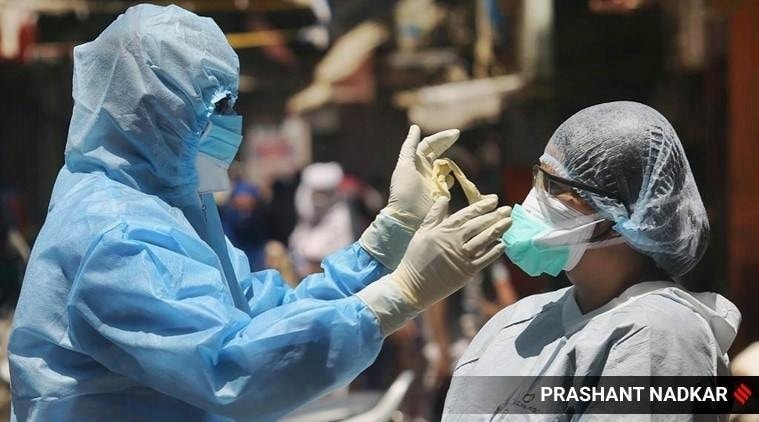 With authorities at different levels emphasising on providing essential services and asking people to restrict their travel to absolutely essential circumstances, we started redefining what is “essential”.
With authorities at different levels emphasising on providing essential services and asking people to restrict their travel to absolutely essential circumstances, we started redefining what is “essential”.
Written by Chaithra Puttaswamy
When humanity grapples with unexpected and shocking experiences, the existing terms seem inadequate in capturing the consequent fear, grief and trauma. Human languages have to make room for newer expressions and widen the scope of existing words. Last month, the Oxford English dictionary made an extraordinary update to include COVID-19 and a few other words related to the pandemic. The dictionary’s executive editor explained that an “exponential rise in usage of a single word in a very short period of time, and for that word to come overwhelmingly to dominate global discourse” was the reason behind this update which was over and above their periodic publication cycle.
Towards the end of January 2020, people interested in international affairs started talking about a deadly virus doing the rounds in Wuhan, China. In a month’s time, danger was flying into our homes and people in urban areas were wary of handshakes with visitors from outside the country. COVID-19, Corona virus, Wuhan virus, SARS-cov-2 virus were mentioned with a word of caution. By mid-March, public discourse was dominated by responses to the “pandemic”– both social and medical. Terms like “lockdowns”, “social distancing”, “work-from-home” became common parlance. Sanitisers, PPEs, ventilators and other medical terms were now widely understood. A month down the line, the impact of the long lockdown became talk of the town. Migrants were an issue on the economic front and so was “flattening the curve”, managing the “doubling rate” and limiting the spread to “containment zones”.
Before 2020, “quarantine” meant isolating individuals, who were suspected as disease carriers for a limited duration to ascertain that they are infected after all. Today, it is a word that everyone seems to be familiar with. In March, everyone seemed to have quarantined themselves to stay away from infected individuals. However, by May, only those who had travelled from one place to another were quarantined and everybody else was “self-isolating”. In India, it took most people about two lockdowns of 45 days to fully appreciate the difference between terms such as physical distancing and social distancing. Nonetheless, these are phrases often used interchangeably with quarantine.
With authorities at different levels emphasising on providing essential services and asking people to restrict their travel to absolutely essential circumstances, we started redefining what is “essential”. Food, medicines, banking services were deemed essential and rightly so. Certain sections of society complained bitterly about alcohol being in the non-essential list. Isolation and distancing were essential and employment and options of earning a living for daily wagers was non-essential. Revitalising the industry was essential.
COVID-19 had its own sets of heroes and victims. In the 1960s India went with the slogan “Jai Jawan Jai Kisan”. By the turn of the new millennium, the kisan was mourned for his suicidal tendencies and treated as a liability whose debts had to be written off. The kisan is back in the picture, albeit in the background. In 2020, we have a new set of “Covid heroes” — medical and para-medical corps, Asha workers and essential service providers. We initially clapped, lit lamps and showered flowers on them and finally let them to fend for themselves.
The very first wave of victims was not identified for their religious affiliations or social class. In other words, they had enough of a social standing to conceal these identities. Initially, the attitude was COVID-19 will predominantly affect rich air travellers and the poor would be insulated from the infection as they were unlikely to come in contact with COVID-19 carrying individuals arriving from abroad. However, in less than two months, not only did the poor become more vulnerable to the virus, but they were also seen as carriers of the disease. Living in unhygienic close quarters, unable to maintain social and physical distance, the urban poor became the new “paraiah”.
The cheap migrant labour, who was willingly welcomed to replace the unaffordable local labour quickly became the “outsider” crowding the metropolises and the urban spaces. They were expected to find their way back to “their villages” (thousands of kilometres away) overnight and if they stayed back, not venture out of their meagre living spaces to find food. A very interesting distinction was made between “migrants”, “tourists” and “expats”. Tourists and professionals stranded in foreign lands needed to be rescued. However, those who stared at the gaping void left behind by the migrants and needed them to get their economies back on their feet, have started referring to them as “guest workers”.
Work from home, online classes, online medical consultations, doorstep deliveries of all “essentials” that can be shopped were once considered an extension of the norm — these are now the “new normal”, and looks like they are here to stay. The uninitiated have to learn pronto or bear the brunt of it. Despite these delusions, the catchphrase of this season is: “In these uncertain times…”
The writer is associate professor, department of humanities and social sciences, Indian Institute of Technology Kanpur